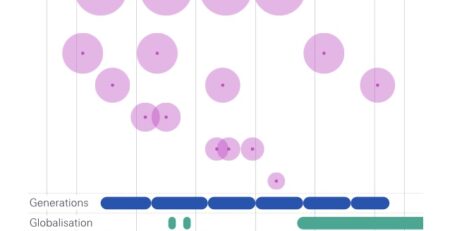Twenty Years of Wage Inequality in Latin America
By Julián Messina, Joana Silva
This paper documents an inverse U-shape in the evolution of wage inequality in Latin America since 1995, with a sharp reduction starting in 2002. The Gini coefficient of wages increased from 42 to 44 between 1995 and 2002 and declined to 39 by 2015. Between 2002 and 2015, the 90/10 log hourly earnings ratio decreased by 26 percent. The decline since 2002 was characterized by rising wages across the board, but especially among those at the bottom of the wage distribution in each country. Triggered by a rapid expansion of educational attainment, the wages of college and high school graduates fell relative to those with primary education. The premium for labor market experience also fell significantly. But the compression of wages was not entirely driven by changes in the wage structure across skill groups. Two-thirds of the decline in the variance of wages took place within skill groups. Changes in the sectoral, occupational, and formal-informal composition of jobs matter for the process of reduction in inequality, but do not fully account for the fall in within-skill variance. Evidence using longitudinal matched employer-employee administrative data suggests that an important driver was falling wage dispersion across firms.
Source: SSRN











